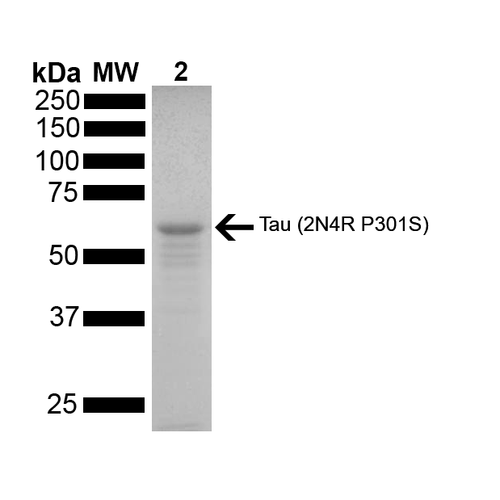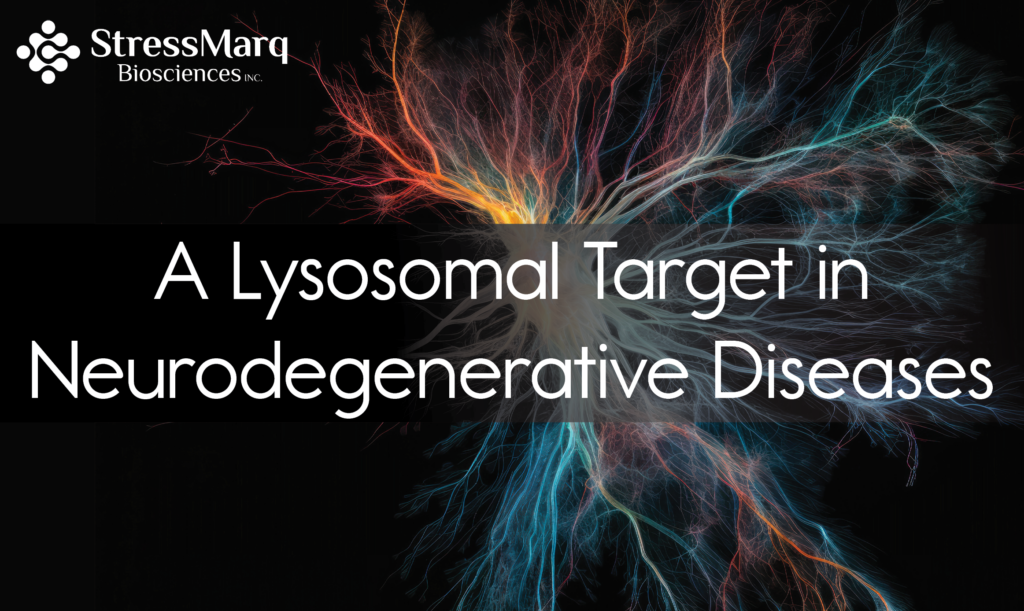A Lysosomal Target for Treating Comorbidity in Neurodegenerative Diseases
Accumulation of misfolded protein aggregates is the main cause of neurodegenerative diseases. Tau aggregates characterize Alzheimer’s disease (AD) and frontotemporal dementia (FTD). To further complicate these diseases, the risk of simultaneously getting other conditions — comorbidities — increases with age and clinical progression. Alpha synuclein accumulation, the pathogenic hallmark of Parkinson’s disease (PD), can also be seen in AD patients. Lysosomal degradation of proteins may be an important consideration in exacerbating these comorbidities.
A new study by Takahashi et al., reports for the first time links between tau and a lysosomal complex — comprised of progranulin (PGRN) and beta glucocerebrosidase enzyme (GCase). The lysosomal regulator, PGRN, has a protective effect in neurodegeneration. Loss of the PGRN impairs the activity of the lysosomal enzyme, GCase, which in turn enhances both tau and alpha synuclein aggregation1.
The PGRN-GCase pathway is critical in Gaucher disease, a lysosomal neurodegenerative disorder affecting the young. The PGRN-GCase pathway may now have broader therapeutic potential for comorbid neurodegenerative proteinopathies.
Progranulin (PGRN) reduction worsens mortality and disinhibited behavior in mice
To study the effect of PGRN in the context of neurofibrillary tangles in neurodegenerative disease, a well-known PS19 mouse model was used. The mice overexpressed the mutant form of human tau (P301S) on PGRN haploinsufficient and complete null backgrounds, giving rise to a reduction or complete loss of PGRN, respectively.
Examining the mice found that mortality rates worsened with decreased PGRN. In addition, these mice showed more disinhibited behavior — loss of social knowledge and disregard for social conventions. Interestingly, PGRN reduction improved spatial memory and neurodegeneration in the hippocampal cortex of the mice. Though at first, these effects seem paradoxical, these effects actually mirror the complex array of symptoms seen with human tauopathies, such as AD and FTD. For example, one of the prominent symptoms of FTD is disinhibition, whilst memory function is preserved until the late stage of the disease.
PGRN reduction promotes tau aggregation in vitro
PGRN interacts with the lysosomal enzyme GCase. Decreased levels of PGRN cause a reduction in GCase activity. GCase is responsible for cleaving the glycolipid, glucosylceramide (GlcCer). Examination of the substrate GlcCer in PS19 mice with PGRN reduction found increases in GlcCer-positive tau inclusions, which were gene-dosage dependent. Moreover, this buildup of GlcCer was seen in human samples – analyzing neurofibrillary tangles of AD patient brains showed the presence of high levels of GlcCer.
GCase has also been linked to alpha synuclein. The researchers investigated whether alpha synuclein was affected by PGRN reduction. They found that complete loss and haploinsufficiency of PGRN increased tau inclusions and caused a concomitant accumulation of alpha synuclein.
To examine the mechanism by which the PGRN-GCase complex causes tau aggregation in vitro, amyloid fibril formation was monitored using the tau seeding assay employing the fluorescent Thioflavin T probe. StressMarq’s Tau-441 (2N4R) P301S Monomers (catalog# SPR-327) were monitored for their ability to aggregate. Lipid droplets of the GCase substrate, GlcCer, accelerated tau aggregation. Therefore, PGRN can regulate tau- and synucleinopathies via GCase and GlcCer.

Figure 1. SDS-PAGE of ~67 kDa Human Tau Protein 2N4R P301S Monomers (catalog# SPR-327)
StressMarq products for neurodegenerative proteinopathies
The study by Takahashi et al. reveals that PGRN reduction impairs GCase activity, leading to an accumulation of GlcCer that can directly promote tau aggregation. Additionally, PGRN reduction is associated with the accumulation of both tau and alpha synuclein aggregates. The PGRN-GCase complex has already been identified as playing an important role in Gaucher disease and FTD, but now has potential therapeutic implications in other neurodegenerative diseases, including AD. This study also provides evidence for the need to target more than one disease-causing protein as opposed to monotherapies for developing neurodegenerative disease treatments.
Related StressMarq products
A leading provider of innovative life science reagents, StressMarq manufactures a range of Alpha Synuclein and Tau Pre-formed Fibrils, Oligomers and Monomers for modelling proteinopathies. These disease models allow researchers to gain insights into neurodegenerative diseases at a molecular level.
References
- Reduced progranulin increases tau and a-synuclein inclusions and alters phenotypes of tauopathy mice via glucocerebrosidase. Takahashi, H. et al. bioRxiv preprint doi: https://doi.org/10.1101/2022.12.25.521308; 2022.


Leave a Reply